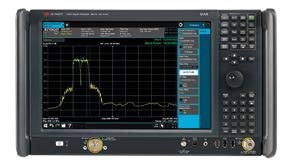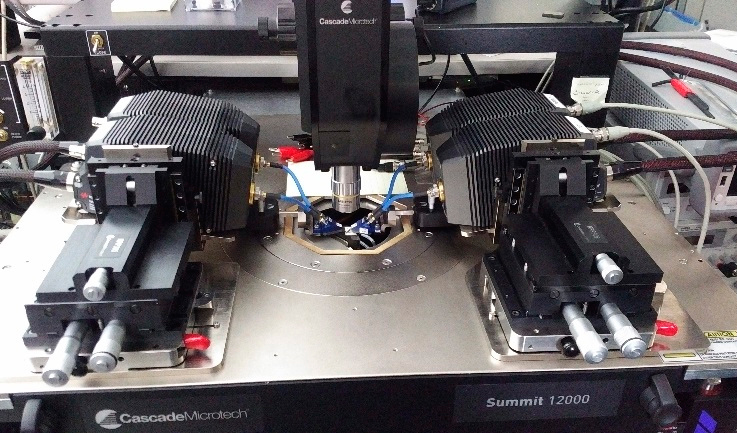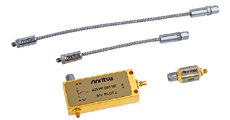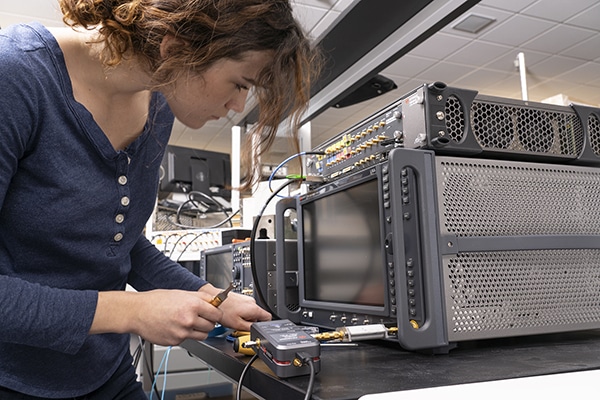As developers move closer to terahertz frequencies, it's easy to fall into the trap of underestimating the difficulties that can arise in design, simulation, measurement, and analysis. And it is that the behavior of millimeter waves is very different from that of signals in base band, RF or microwaves. For example, at wavelengths of 10 mm (30 GHz), 1 mm (300 GHz), or 0,3 mm (1 THz), propagation losses in the atmosphere are high, especially at the resonant frequencies of carbon molecules. oxygen, water and carbon dioxide. In addition, these differences make it difficult to generate energy and it will become increasingly difficult to make calibrated measurements and obtain useful results. Engineers reaching this millimeter range rely on Keysight's ability to stay ahead of the curve, creating solutions that provide access to accurate, repeatable measurements at ever higher frequencies and wider bandwidths. Keysight's dedication to continually developing commercial tools for extremely high frequencies stems from its proven combination of measurement science and millimeter wave expertise. Helping other industries stay one step ahead is part of the Keysight identity, whose latest releases are helping developers get the results they want at 110 GHz and beyond.
Innovation in technology and opening new horizons
Millimeter wave technology has been in use for decades, especially in aerospace, defense, and return traffic applications, where the benefits justified the high development, manufacturing, and support costs. In recent years, manufacturing advances have reduced the cost of Extremely High Frequency (EHF) devices, making them more affordable for consumer and commercial applications. For example, developers using complementary metal oxide semiconductor (CMOS) technology have produced devices with an fT of over 500 GHz, and some of them aim to push this inexpensive technology into the terahertz range. As an innovative company, Keysight itself has carried out groundbreaking R&D when it comes to EHF components. Its staff's capabilities in microwave semiconductor technology have enabled the development of a state-of-the-art indium phosphide (InP) process that supports transistor switching frequencies of more than 300 GHz. This allows for higher bandwidths in integrated circuits and in products such as a recently introduced oscilloscope, which will offer breakthrough real-time and equivalent-time performance.
Overcome obstacles and guarantee the excellence of the measures
Two key issues—signal guidance and power generation—are especially complicated if we want to create commercial test equipment that produces accurate and repeatable results. A crucial example would be waveguides, which must be as perfect as possible to guarantee the proper internal functioning of any millimeter wave instrument. To handle signals between 100 GHz and 1 THz, different waveguide bands are needed. At millimeter wavelengths, any “skew” in a flange connection can cause unwanted reflections that will degrade signal quality and reduce signal power. Generating adequate signal power levels is challenging, given the difficulty of simultaneously maintaining amplifier efficiency and linearity at these frequencies. This is why we tend to limit the maximum power level that a signal generator or network analyzer can produce. Related to the above, a wider bandwidth is attractive for millimeter waves; however, broadband measurements will introduce more noise into the instrument, increasing its noise level. Thus, a combination of lower peak power and higher noise level reduces the dynamic range available in broadband spectrum measurements. Once these issues are resolved, the next challenge is to calibrate both the instrument and the test setup. Also, although it is difficult to accurately calibrate power levels at extremely high frequencies, precise power control is essential to ensure measurement accuracy and prevent damage to the device under test. At these frequencies, measurements can feel like there is some art and some science, and engineers have to put aside their old ways, take a more deliberate approach, and adapt their expectations. For example, special attention must be paid to each phase of the measurement setup: instruments, cables and accessories. This means doing what is necessary to ensure perfect connections, clean up-conversion of output signals, accurate down-conversion of incoming signals, low-level internal spurious signals, and good management of internal harmonics. These factors are just as important in spectrum and signal analysis as in network analysis and characterization of passive (S-parameters) or active (X-parameters) devices. And we still have to add to these challenges one more critical difference: in certain cases, the connection between the instrument and the device under test must be made by air rather than through cables or waveguides. In this case, it is necessary to control and calibrate the radiated environment around the test setup.
A leadership story on the airwaves
Although the use of the different types of waves is on the rise in business applications, Keysight has been ahead of the curve for decades. Its first gigahertz products date back to 1967, with the release of the HP 8410 network analyzer, which measured up to 12 GHz and calculated S-parameters. In the late 26,5s, the company released its first millimeter-wave equipment, with generators of signals above 45 GHz with upconverters and wideband network analyzers from 100 MHz to 67 GHz. spectrum analyzers and 2006 GHz handheld combined analyzers (FieldFox, 50). Other examples are a 2015 GHz wide-bandwidth oscilloscope (Infiniium DCA-X 90D); a 86100 GHz wideband transceiver (E68A); 7760 GHz microwave network analyzers, expandable to 67 THz (PNAX); a 1,1 GHz analog signal generator, expandable to 67 THz (PSG E1,1D); 8257 GHz oscilloscopes (Infiniium Z Series), and a 63 GHz PXIe high-performance vector signal analyzer (M50A). Most recently, in October 9393, Keysight released the UXA X-Series N2016B signal analyzer, the first to offer continuous swept frequency coverage from 9041 Hz to 3 GHz. Its fully integrated instantaneous bandwidth is 110 GHz, and a IF output supports a maximum analysis bandwidth of 1 GHz when connected to an external Keysight oscilloscope. Advanced front-end circuitry achieves efficient, low-loss mixing, for example, with a Display Average Noise Level (DANL) as low as –5 dBm/Hz when characterizing broadband modulated signals in the frequency band. electromagnetic waves. Using frequency-extended products from two of our solution partners, Virginia Diodes, Inc. (VDI) and OML, Inc., many of Keysight's signal generators, signal analyzers, and network analyzers can span frequencies of between 50GHz and 1,5THz. For example, a recently deployed solution includes spectrum analysis capability up to 1,5 THz. Keysight's software products address the need to integrate design, simulation, measurement, and analysis at millimeter wave frequencies. Design and simulation software solutions enable an efficient workflow that accelerates the development of next-generation devices and systems. Keysight's EEsof EDA family includes circuit simulators, electromagnetic field solvers, and device modeling solutions that help engineers from first design to first prototype. In fact, the N9041B analyzer R&D team used Keysight's Advanced Design System (ADS) software to get the first correct designs for the millimeter-wave filters used at the analyzer input.
conclusion of the waves
Engineers working on cutting edge technology have trusted Keysight for more than 75 years for easier access to accurate and repeatable measurements at ever higher frequencies and wider bandwidths. Today, the company reaffirms its leading position by offering R&D engineers tools to carry out designs, simulations and measurements at millimeter wave frequencies. Commercial products such as the UXA N9041B signal analyzer and a soon-to-be-released oscilloscope based on a state-of-the-art InP process demonstrate Keysight's leadership in solutions for millimeter-wave applications.








